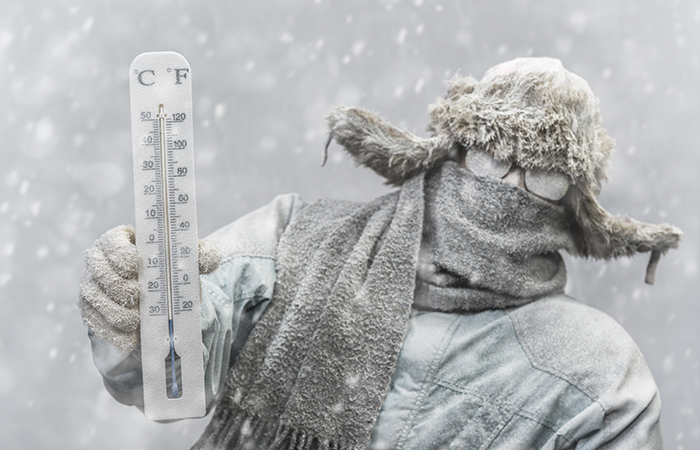St. Elizabeth's Hospital issued the following announcement on Feb 12.
Know the signs of hypothermia and frostbite.
With the weather forecast predicting winds and temperatures in the teens, HSHS St. Elizabeth’s Hospital reminds everyone that with the frigid temperatures also comes the risk of cold-related injuries. The most common cold-related health issues are hypothermia and frostbite.
All are encouraged to stay indoors when temperatures drop to dangerous levels. The hospital notes that those who do work outside in cold temperatures should be aware of the possibility of hypothermia and frostbite and take steps to prevent these potentially serious issues.
Preparation is the best defense against these types of cold-weather injuries. Dress appropriately if you do need to venture out into the cold. Tell someone where you are going, when you expect to arrive and let them know when you get there. Keep warm clothes and boots in your car, just in case it won’t start or breaks down.
Tips if you must be outdoors:
- Dress in layers; wear insulated clothing that allows for evaporation and minimal absorption of perspiration.
- Take breaks. Warm up inside when needed.
- Drink water to stay hydrated.
According to the CDC, if you feel someone might have hypothermia:
- Get the person into a warm shelter and remove any wet clothing.
- Warm the center of the body first — chest, neck, head, and groin. Or use skin-to-skin contact under loose, dry layers of blankets, clothing, towels or sheets.
- Provide warm beverages to help increase the body temperature.
- Keep the person dry and wrapped in a warm blanket, including the head and neck, when his or her body temperature increases.
If you have signs of frostbite, the CDC recommends:
- Get into a warm room as soon as possible.
- Unless necessary, don’t walk on frostbitten feet or toes.
- Immerse affected area in warm—not hot—water. Or, warm the affected area using body heat.
- Don’t rub the frostbitten area. This can cause more damage.
- Don’t use a heating pad, heat lamp, or the heat of a stove, fireplace, or radiator for warming. Affected areas are numb and can be easily burned.
Original source can be found here.

Source: St. Elizabeth's Hospital






 Alerts Sign-up
Alerts Sign-up